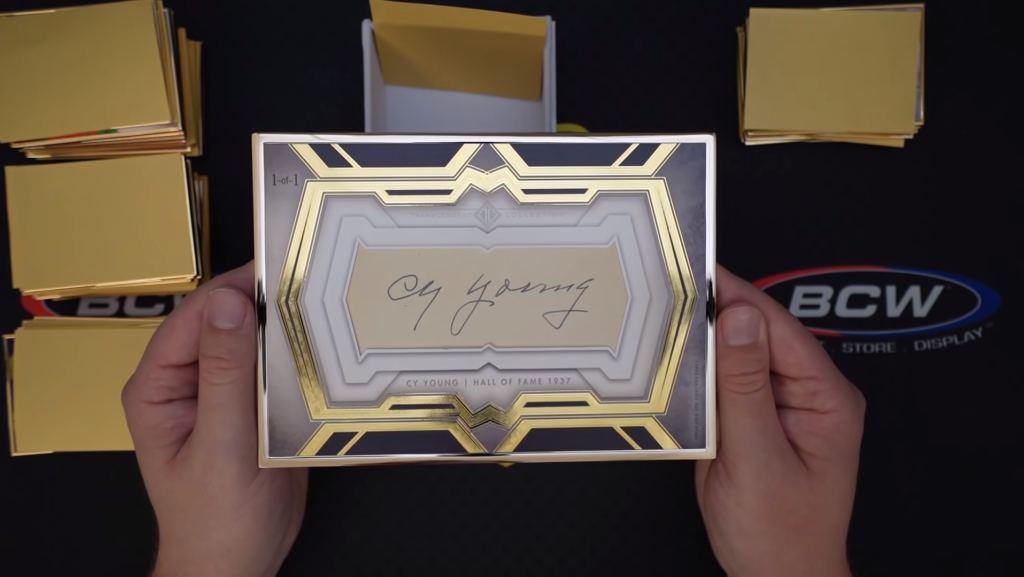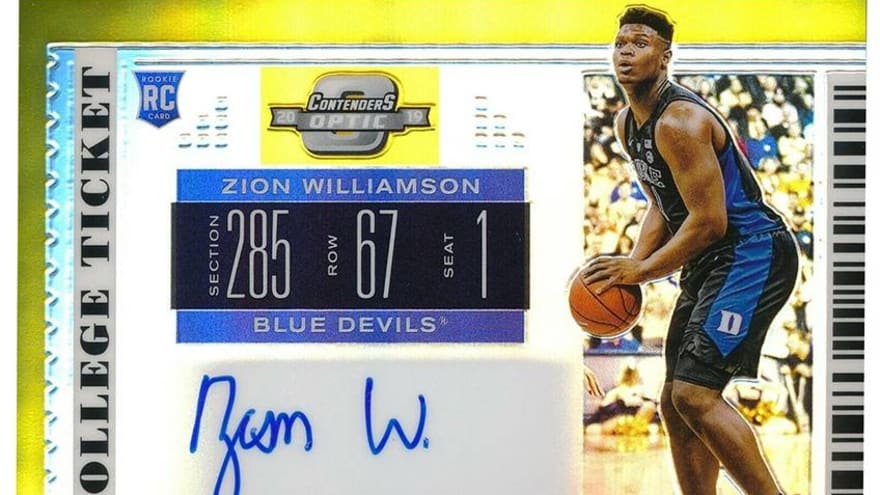Sports card collecting is a hobby that’s in the midst of a renaissance of sorts. A lot of this renewed interest is from lapsed youthful collectors who now find themselves with disposal income a few decades later. In fact, there’s a very good chance that’s the reason you’re reading this post. You’ve come back to the world of sports cards but aren’t quite sure where to start.
Trust us, that’s okay. The hobby has changed a ton over the past 20 years or so. It’s a lot more complicated now. In 1986, you could just hope to pull a Michael Jordan rookie out of a Fleer pack. Now, you have all sorts of super premium lines, exceedingly rare parallels, and autograph/patch cards to worry about. It’s enough to make your head spin if you don’t come in with a gameplan.
Figure out why you’re collecting
This first tip is the most important, the most obvious, and the least clear-cut. If cards are purely a speculative investment for you, then you’re able to approach it without any sort of fan bias. You simply want to make moves that maximize your return on investment. It’s no different than playing the stock market. On the opposite end of the spectrum, if you’re just collecting for the love of the game, do whatever excites you. With no interest in turning a profit, it’s easy to just go after cards and players that reignite that youthful bliss.
However, for the overwhelming majority of people, it’s a combination of the two. They love sports, but they’re also putting enough time and money into cards that it’s a gamble/investment. The key here is to manage expectations. Something like a limited-run rookie patch autograph won’t come along very often, but it’s so sweet when it does. Just focus on putting together a collection that you’re proud to show off — whether that means high value cards, neat portraits of your favorite players, or both.
Set a budget
Okay, we lied. This is actually the most obvious tip. It doubles as great life advice too.
Determine out how much you’re willing to spend and stick to that budget. The reason this bears repeating is because it’s so tempting to venture just slightly outside your price range. There are so many products nowadays that there’s always going to be another box that’s just a little more than you’re comfortable spending. Seriously, look no further than Upper Deck’s All Time Greats Master Collection that was limited to 200 made and retailed for $17,000. This isn’t a hobby you’re going to outspend.
Save yourself the headache and decide on your financial commitment upfront. You don’t want to be nervously praying for a big hit just so you can get back to even. That’s like hoping your team covers so that a bookie doesn’t come for your kneecaps.

Know your options
Here’s where it gets fun. There are so many ways to buy cards. There’s the traditional way of buying packs or boxes or cases, cracking them open, and keeping whatever’s inside. For people who are more risk-averse (or who just know exactly what they want), maybe it makes more sense to buy individual cards from sellers. That way, it’s not up to chance. If you want a Mike Trout rookie, you’re getting a Mike Trout rookie.
However, a third option has emerged in recent years and it kind of splits the difference between the other two. Group breaks have become a very popular and social method of sharing the excitement of opening boxes. Here’s how it works: A breaker sells spots in their break which they stream live. So, someone might simply buy the fifth pack that’s opened. Or, another variation is that someone pays to reserve a team; under those rules, a buyer might get every Red Sox card out of an entire box.
Group breaks probably require a bit more explanation for anyone who’s new to the concept. That’s why we prepared a box breaking primer that should clear up any lingering questions you have. But, the main thing you should know is they’re a modern way for sports card collectors to buy into portions of expensive boxes. That’s why they’re rising in popularity.
Learn to read the tea leaves
Making money on sports cards — just like any investment opportunity — hinges upon your ability to accurately analyze trends and predict the future. It’s not easy! If it were easy, everyone would be a millionaire.
But, if you understand the wide world of sports, you’ll probably have a good idea of where to focus your spending. Here’s an extremely obvious example. Zion Williamson is considered one of the most surefire can’t-miss NBA prospects in years. This drove up demand for his rookie cards, as a lot of collectors were willing to spend a premium now for a chance at hitting the jackpot later. If Zion turns into the next LeBron James, those investments are going to look very savvy.
However, prices can be influenced by greater pop culture trends. For instance, rare Michael Jordan cards skyrocketed in value when the ESPN documentary “The Last Dance” premiered. Popularity is what dictates price.

Popularity dictates price
Okay, that last sentence is so important that it should probably be its own section. Value is driven by who’s hot. Superstars and hyped-up potential superstars are worth exponentially more than very good players. That’s just the way the market works.
If you have your GM hat on, you might think George Springer is almost a suitable replacement for Mookie Betts. Not in the world of card collecting. Betts’ sought-after cards go for way more than Springer’s. The same is true of Betts and Mike Trout. They’re both generational talents, but Trout cards command way more than Betts’ — and that’s because Trout is shifting into possible once-in-a-lifetime talent territory.
You should also keep in mind that position also plays a major factor when it comes to price. Players who rack up monster offensive stats have historically had the most valuable cards. Think about the NFL. Quarterbacks can fetch some astronomical amounts, but a team’s best defensive player hardly moves the needle.
Find your lane
Take some time to test the waters, figure out what excites you, and focus on it. Trying to turn sports cards into a completionist exercise is a fool’s errand. There’s simply too much of everything. There are too many cards of your favorite player to collect them all. There are too many rare parallels to collect a full set. For better and for worse, this isn’t the ‘80s when those were reasonable goals. Instead, go after your passion with the understanding that you’re never going to get it all.
Collecting sports cards is a fun and addictive hobby, but it can also feel defeating if you don’t have any goals in mind. That’s why it’s important to do a little research before you start to get an idea of the approach you want to take. It’ll prepare you for the research required to make smart buying and selling decisions. Take time to understand how the hobby works nowadays and set some guidelines for what you want to get out of it, and you’ll be a lot happier in the long-run.


1 thought on “Here are some tips for new sports cards collectors”